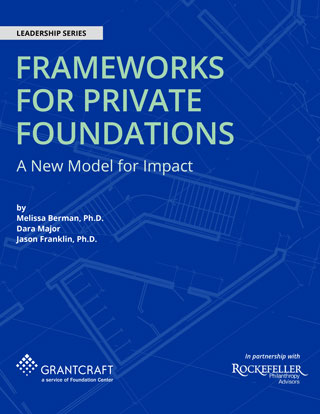Funders – are you doing these five awesome things?
|
I do a lot of listening and observing. We work with nonprofit organizations on a daily basis through our libraries, classes, and customer service inquiries, and so we hear a lot of feedback about working with funders. Another time, I'll send you a list of frustrations, but today, I thought I'd highlight some key practices that make nonprofits – including our own Foundation Center development team – smile. (Hint: it's almost always the little things.) |
|
- Transparency. Any time funders share what’s expected in an application clearly, it’s appreciated. It saves time guessing what a foundation wants, and enables focus through clear frameworks. Extra credit: when funders make themselves available to answer questions about those requirements.
- Connection. Nonprofits always hear that funding is “about the relationship,” but starting to build that relationship can be hard. With power dynamics always at play, many nonprofit staff fear being “just another fly in funders’ ears” or saying something that might disqualify them from an opportunity down the road. Funders who proactively build in “getting to know you” time during early meetings and ask about outside-of-work commitments (like family or passion projects) increase trust.
- Appreciation. When an organization wins a grant, the profuse thanks always goes to the funder. But, funders who pause to thank or otherwise acknowledge organizations – for example in a note after a site visit or through an unexpected treat in the mail – really make a lasting impression that ultimately benefits everyone.
- Feedback. After a grant check is cut, the next interaction a nonprofit might have with a funder is their grant report a year later. However, when a funder checks in during the year – perhaps around key organizational or project milestones – it shows that they are paying attention…and care. Extra credit: when the check in is grounded in genuine curiosity and doesn’t place additional burden on the grantee.
- “Shortcuts." Time is always of the essence; any time-saver that a foundation offers is always appreciated. This often manifests in a streamlined or common application process, additional options for reporting (does a meeting count?), or a combined report-renewal request. And, permission to save trees is a part of it; long gone are the days where a ream of paper is necessary for a full application, but many organizations are still asked to send many hard copies.
Listening to grantees and building authentic relationships with the communities that we’re looking to serve is absolutely critical to advancing the work of our sector. How do you embed these practices into what you do? What’s the downside? How have these helped? We want to know! Share your wisdom on these practices so that others can learn from you.
And, a direct thank you from me: last month I asked for help, and long-time GrantCraft contributor Oak Foundation quickly responded. (Thank you thank you!) We’re still fundraising for our content management system migration, so if you’d like to join this effort, please let us know!
This letter originally appeared in this week's GrantCraft newsletter. To sign up for our newsletter and special alerts, register for free.
P.S. Connect with Foundation Center staff at the upcoming events below, we’d love to say hello and learn more about your work in the sector!
- The Ocean Conference
June 5 – June 9, 2017 – New York, NY - American Library Association Annual Conference and Exhibition
June 22 - June 27, 2017 – Chicago, IL


